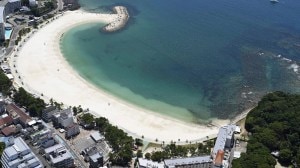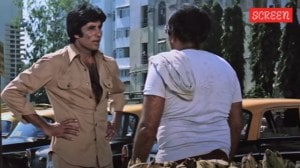Know Your City: Gandhi’s family house which witnessed his transformation from ‘Mohan to Mahatma’
It was at this house in Rajkot that Gandhi took three vows of abstaining from wine, women, and meat to convince his mother Putlibai to permit him to go to England to study law in 1888.
 A trader takes a break and sits in Kaba Gandhino Delo. (Express photo)
A trader takes a break and sits in Kaba Gandhino Delo. (Express photo)The Centre and Gujarat governments are working together to redevelop Sabarmati Ashram, founded by Mahatma Gandhi in Ahmedabad in 1917, under the Gandhi Ashram Memorial and Precinct Development Project.
Prime Minister Narendra Modi inaugurated the redeveloped Kochrab Ashram in Ahmedabad in March of this year. Established in 1915, Kochrab Ashram was the first of many ashrams Gandhi set up during India’s struggle for freedom from British rule.
Before that, the state government converted Alfred High School, Gandhi’s alma mater in Rajkot, into a museum in 2018 after closing down the historic school due to falling enrolments and poor performance of students. The state government has also helped renovate buildings in Rashtriya Shala (literally, the national school), an institute Gandhi himself founded in 1921 in Rajkot to instil feelings of nationalism among students and prepare volunteers for the Freedom struggle.
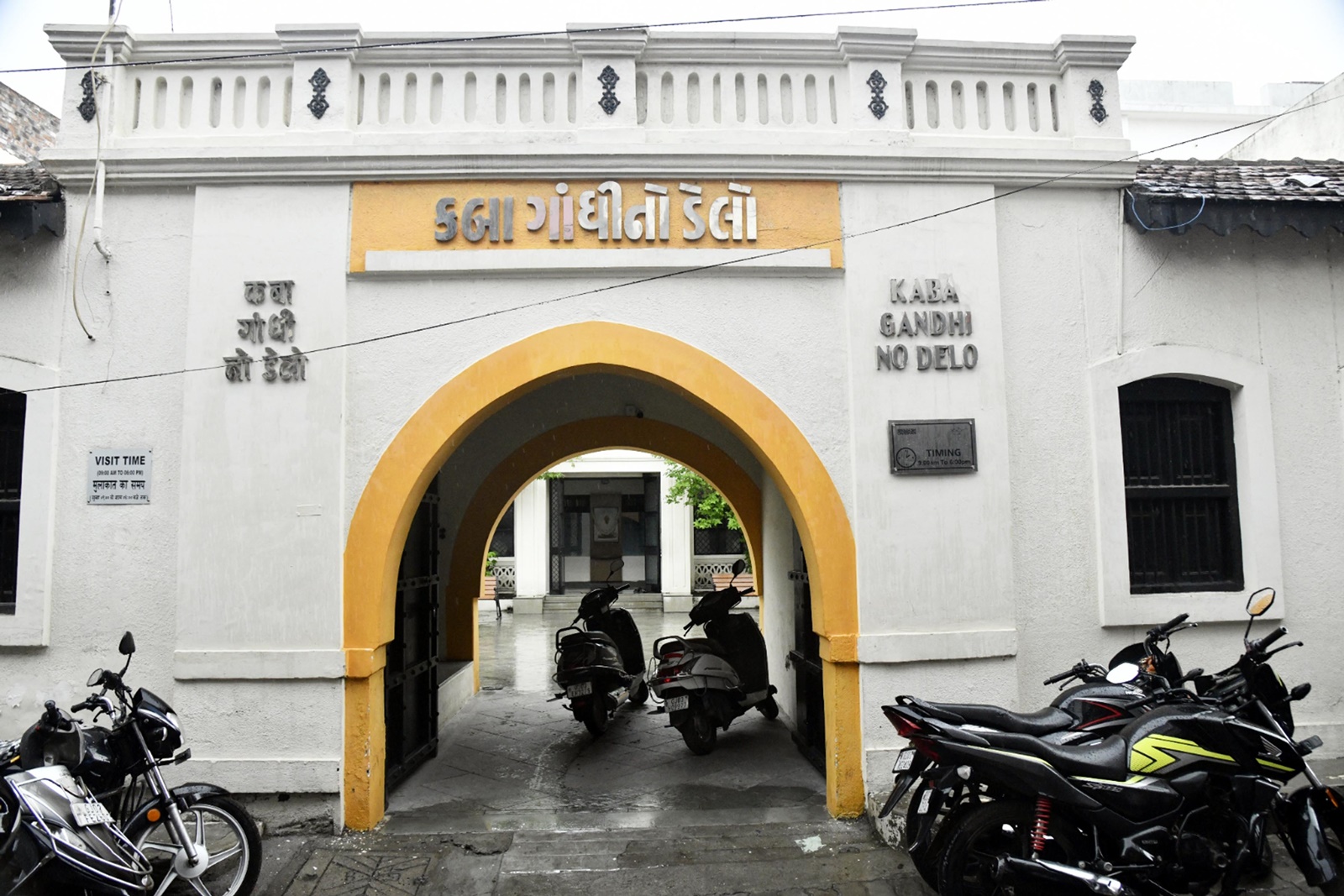 Wearing a neat white-and-yellow coat of paint, Kaba Gandhi No Delo and its gate look rather large in a neighbourhood of small shops and smaller entrances. (Express photo)
Wearing a neat white-and-yellow coat of paint, Kaba Gandhi No Delo and its gate look rather large in a neighbourhood of small shops and smaller entrances. (Express photo)
Amidst all the buzz about Gandhian institutes in recent years, Kaba Gandhi No Delo, the Gandhi family house which sowed the seeds of “Gandhi’s transformation from Mohan to Mahatma”, has been a quaint, quiet place on the crowded Lakhajiraj Road in downtown Rajkot. Entry of four-wheelers and auto-rickshaws is prohibited from Phoolwala Chambers, a few hundred metres away from Kaba Gandhi No Delo, as one approaches the historic building from Trikon Baug, a major traffic junction of the city.
As one moves forward towards the 8 Kadiya Navline, the address of Gandhi’s residence, one is greeted by flashy signboards of garments, hosiery and cutlery shops, which seem to have overwhelmed the place and narrow lanes made narrower by unending rows of parked two-wheelers.
Wearing a neat white-and-yellow coat of paint, Kaba Gandhi No Delo and its gate look rather large in a neighbourhood of small shops and smaller entrances. Two-wheelers parked outside stand in stark contrast to the building’s colours.
Karmachand Gandhi, the father of Mahatma Gandhi, was popularly known as Kaba Gandhi and his residence was known as ‘Kaba Gandhi No Delo’ (In Gujarati, Delo literally means a gate but figuratively, a residence). A native of Porbandar, Kaba Gandhi moved to Rajkot in 1876 after the princely state of Rajkot appointed him the state’s Diwan (prime minister).
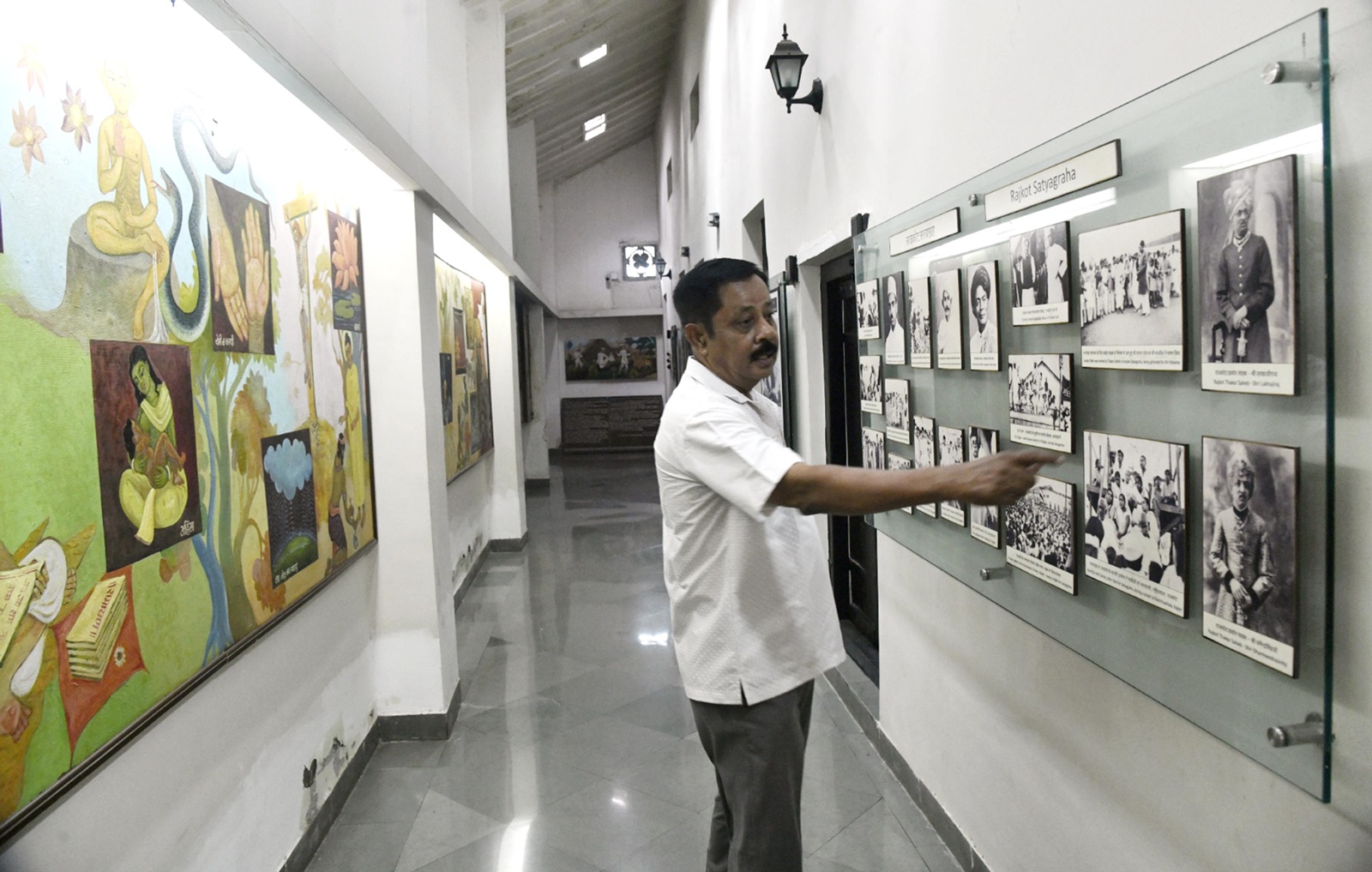 Jolly Pravasi, a tourist guide deployed by Gandhi Smruti Trust at Kaba Gandhino Delo. (Express photo)
Jolly Pravasi, a tourist guide deployed by Gandhi Smruti Trust at Kaba Gandhino Delo. (Express photo)
Documents available with Deap Shukla, grandson of Mahatma Gandhi’s close friend Dalpatram Shukla of Rajkot, show that Rajkot state granted Kaba Gandhi 400 square yards of land early in 1880. The prime minister got the house constructed, having nine rooms and a kitchen lining an open square on that plot. The Gandhis moved into their new home in 1881 when Mohandas, the real name of Mahatma Gandhi, was about 12 years old, a brochure published by Gandhi Smruti Trust (GST), the charitable trust which manages the historic compound, says.
It was while living in this house that Gandhi attempted to eat non-vegetarian and got into smoking after falling into bad company. It was in this house that he committed theft to repay the debt of his elder brother and tried to die by suicide. But this very house also bore witness to Gandhi confessing his blunders to his father via a letter, marking a change in young Gandhi’s character.
While living in this house, he watched plays of Harischandra and Shravana, which deeply impacted his young mind. It was in this house that, at the suggestion of family servant Rambha, Gandhi started chanting Ramnam to overcome his fear of ghosts and spirits.
He was living in this Kaba Gandhi No Delo when he misspelt ‘kettle’ during a spelling exercise as part of an inspection at Alfred High School, which was then known as Kathiawar High School, by education inspector Giles and refused to correct it by copying from a nearby student’s slate despite being nudged by his teacher. This house saw Gandhi marry Kasturba and the birth of their elder sons, Harilal and Manilal. In this very house, he took three vows of staying away from wine, women and meat to convince his mother Putlibai to permit him to go to England to study law in 1888.
According to the brochure, Gandhis sold this house in 1920. However, the government of UN Dhebar, the first chief minister of Saurashtra state, which was created after India won freedom, purchased this house from its then-owner in 1948.
GST was handed over the custody of Kaba Gandhi No Delo in 1969, Gandhi’s centenary year. Putliba Udyogmandir Trust, an NGO, used to run kindergarten classes, adult education classes, sewing classes for women, etc., from Kaba Gandhi No Delo initially, but that activity was shifted out later on. Today, the historic house has a permanent pictorial exhibition, capturing Gandhi’s life in photos and paintings.
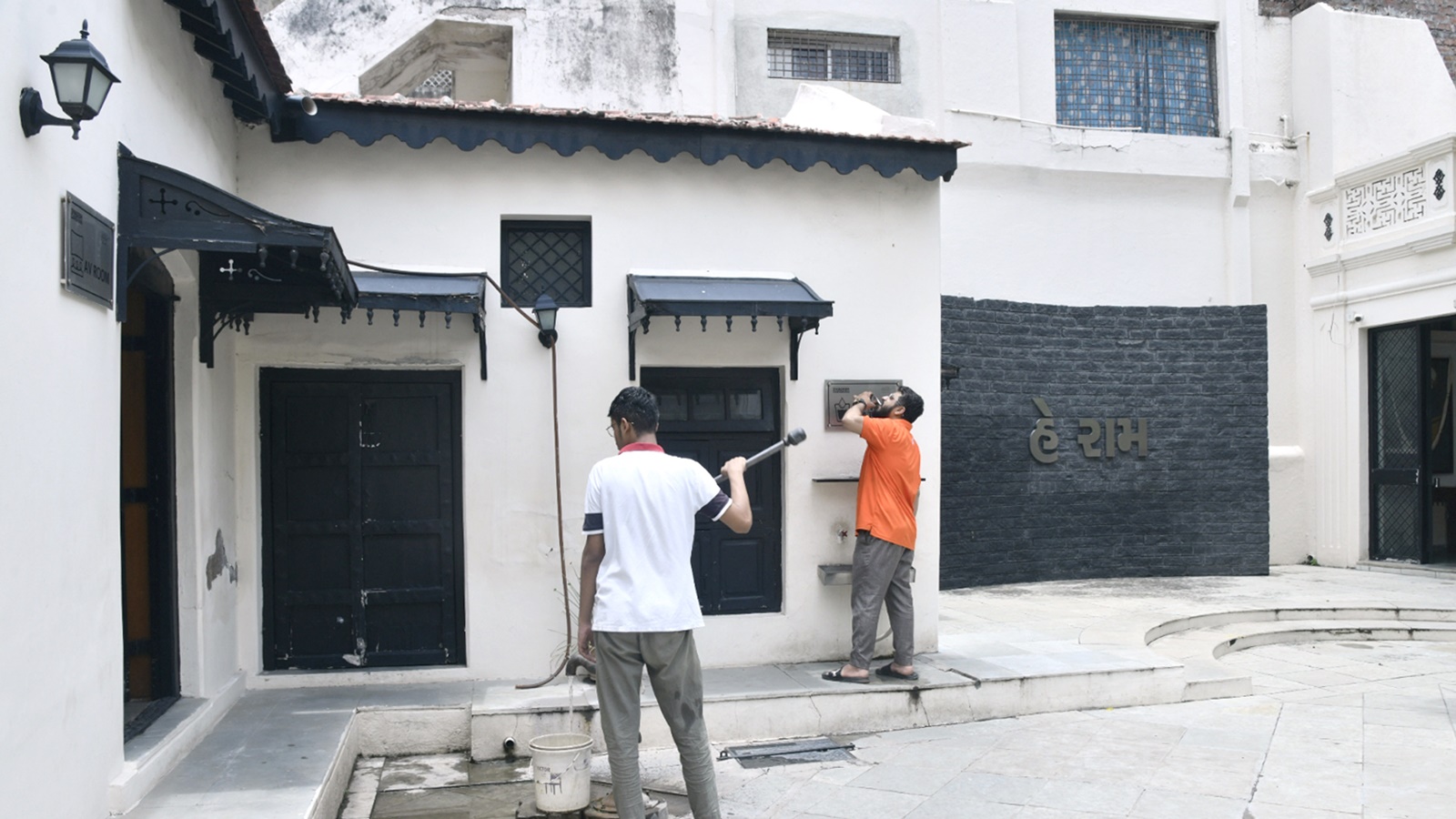 Shopkeepers fetch water from Kaba Gandhino Delo. (Express photo)
Shopkeepers fetch water from Kaba Gandhino Delo. (Express photo)
“School students visit Kaba Gandhi No Delo in large numbers as part of their educational trips. But the number of general visitors remains very low, less than 30 per day,” says GST secretary Alpana alias Heli Trivedi.
The trustees of GST say that access to Kaba Gandhino Delo is a major issue. “Today, that locality is a very crowded marketplace, and Kaba Gandhino Delo is accessible only through narrow lanes. This is a major limitation in organising events there. If Kaba Gandhi No Delo were to be developed on the lines of Ayodhya or Sabarmati Ashram, some 200 shops might have to be relocated. So, we have never demanded that,” says one of them.
“But I believe, were Gandhi alive today, he wouldn’t have liked to have more space around Kaba Gandhino Delo by doing something which can affect the livelihood of others. So we have never complained about it being a very crowded locality,” says Trivedi.
Today, shopkeepers from nearby keep Kaba Gandhi No Delo alive as they make frequent trips to this premises to fetch drinking water from a water cooler and a hand pump. “I had read about Gandhi’s formative years in Rajkot but didn’t know that Kaba Gandhi No Delo, which was at the centre of all of that, was right beside my shop when we shifted from Delhi to here after the Covid-19 lockdown,” says Ajay Ughreja, 22, who sells ladies purses from a nearby shop.








